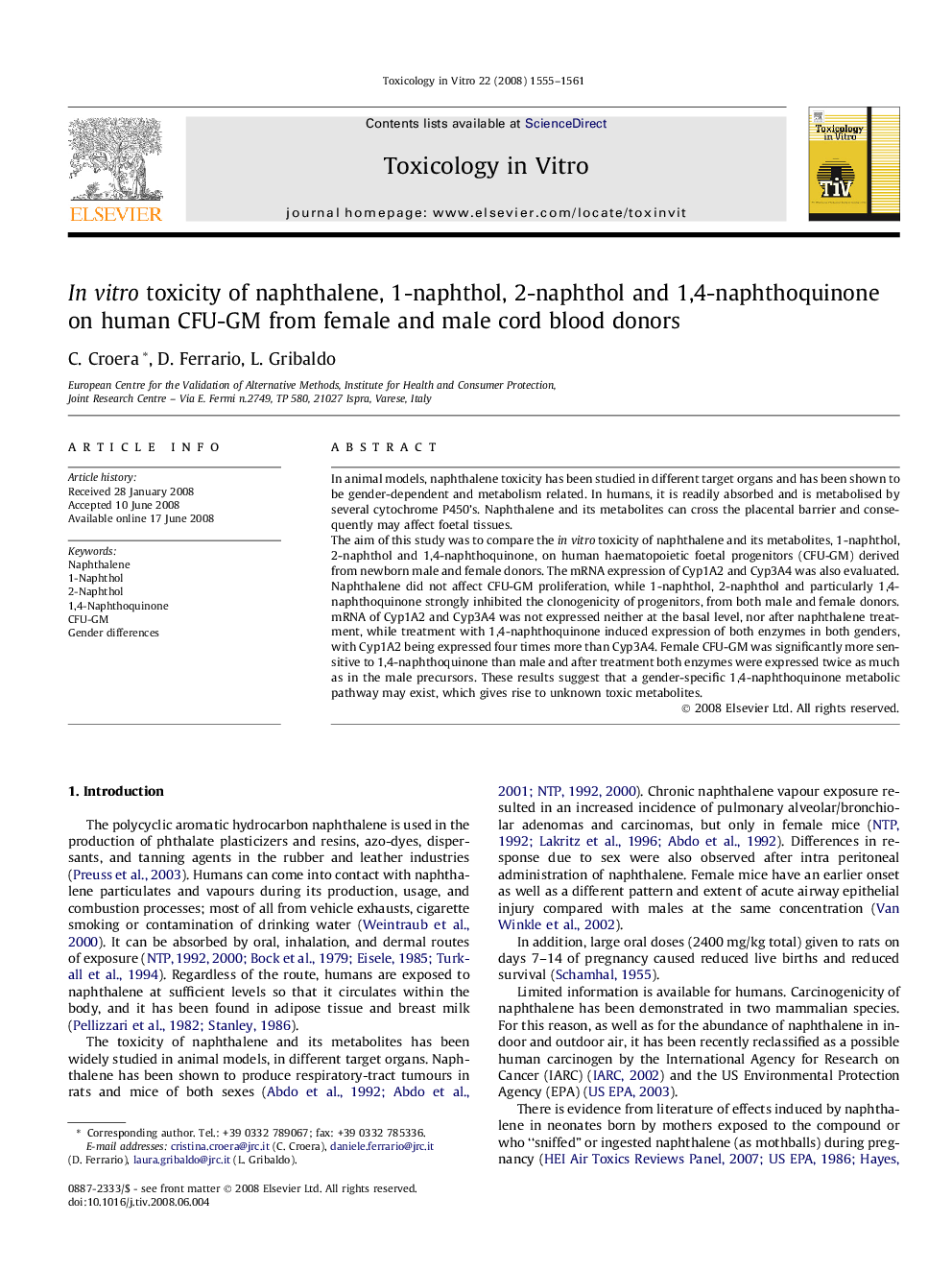| کد مقاله | کد نشریه | سال انتشار | مقاله انگلیسی | نسخه تمام متن |
|---|---|---|---|---|
| 2603101 | 1133808 | 2008 | 7 صفحه PDF | دانلود رایگان |

In animal models, naphthalene toxicity has been studied in different target organs and has been shown to be gender-dependent and metabolism related. In humans, it is readily absorbed and is metabolised by several cytochrome P450’s. Naphthalene and its metabolites can cross the placental barrier and consequently may affect foetal tissues.The aim of this study was to compare the in vitro toxicity of naphthalene and its metabolites, 1-naphthol, 2-naphthol and 1,4-naphthoquinone, on human haematopoietic foetal progenitors (CFU-GM) derived from newborn male and female donors. The mRNA expression of Cyp1A2 and Cyp3A4 was also evaluated.Naphthalene did not affect CFU-GM proliferation, while 1-naphthol, 2-naphthol and particularly 1,4-naphthoquinone strongly inhibited the clonogenicity of progenitors, from both male and female donors. mRNA of Cyp1A2 and Cyp3A4 was not expressed neither at the basal level, nor after naphthalene treatment, while treatment with 1,4-naphthoquinone induced expression of both enzymes in both genders, with Cyp1A2 being expressed four times more than Cyp3A4. Female CFU-GM was significantly more sensitive to 1,4-naphthoquinone than male and after treatment both enzymes were expressed twice as much as in the male precursors. These results suggest that a gender-specific 1,4-naphthoquinone metabolic pathway may exist, which gives rise to unknown toxic metabolites.
Journal: Toxicology in Vitro - Volume 22, Issue 6, September 2008, Pages 1555–1561